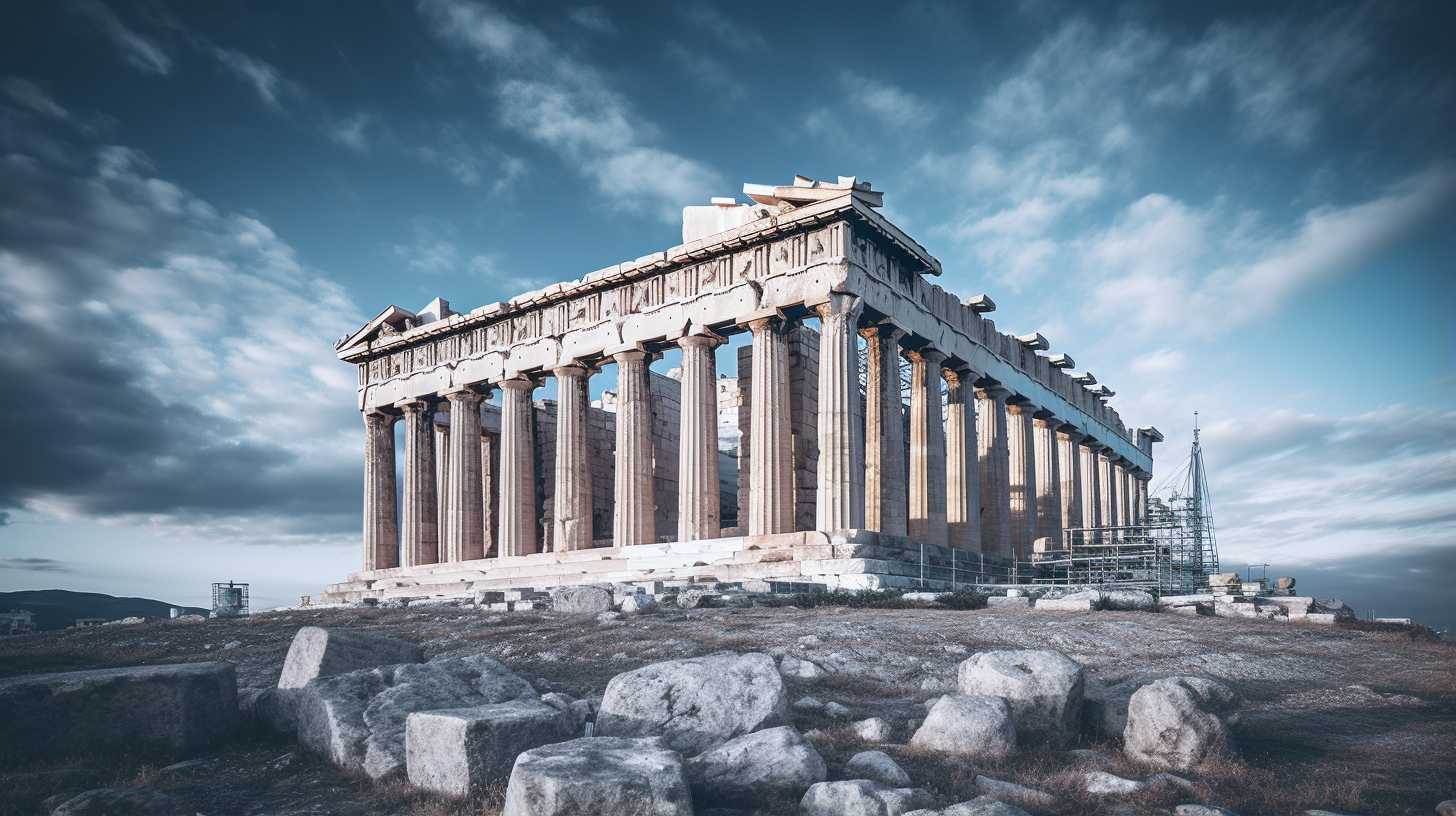High above the bustling streets of Athens, Greece, stands an architectural marvel that has captivated the world for centuries—the Parthenon. With its radiant white marble and impressive scale, this temple atop the Acropolis is a testament to the ancient Greeks’ mastery of architecture and aesthetics.
While its exterior appears to be an epitome of symmetry and precision, a closer look reveals the secrets of its divine perfection.
Built during the 5th century B.C. under the orders of the renowned statesman and general Pericles, the Parthenon commemorates the Athenians’ victory over Persian invaders who had besieged the city for five decades.
Athens during this period was a vibrant center of culture, producing art, literature, sculpture, and architecture that still inspire awe today. The Parthenon, with its gleaming marble, stood as the pinnacle of Greek temple design, filling citizens with a profound sense of wonder.
The Parthenon’s exterior, though seemingly flawless, conceals a fascinating paradox—it was designed with deliberate imperfections. The ancient Greeks were not only masters of geometry but also experts in the art of optical illusions.

They understood that the human eye could be deceived, and they harnessed this knowledge to create a structure that appeared perfect in every way.
At first glance, the Parthenon’s columns appear straight and its proportions impeccable. However, upon closer examination, it becomes clear that there are no right angles in the entire building.
The columns, while appearing straight from below, are slightly tilted toward each other. If they extended infinitely into the sky, they would eventually meet—a curious optical illusion created by the builders.
Moreover, the Parthenon’s columns are not perfect cylinders; they subtly bulge at the center. This intentional deviation from perfection was a clever strategy to compensate for the way our eyes perceive shapes. The brain perceives a pinch at the waist of the columns, and to counter this illusion, the Greeks incorporated a slight bulge.
But why did the Greeks go to such lengths to create these optical illusions? Were they merely striving for perfection in their architectural design, or did they have a deeper purpose in mind? The answer lies in their quest to bridge the gap between the mortal and the divine.
In ancient Greece, the divine was synonymous with perfection, and the gods were viewed as embodiments of this ideal. To connect the earthly realm with the divine, sacred geometry was meticulously woven into the Parthenon’s design.
Every imperfection and optical illusion was a deliberate choice, believed to endow the temple with a touch of divine power. The Parthenon, in all its grandeur, was intended to serve as a conduit between the mundane world and the realm of the gods.
Video:
As we gaze upon the Parthenon today, we are not just admiring an architectural masterpiece but also a symbol of the human desire to reach for the divine.
The temple’s deliberate imperfections remind us that, in our pursuit of perfection, we often discover a deeper connection to something greater than ourselves—the eternal quest to bridge the gap between the earthly and the divine, just as the ancient Greeks did through their remarkable creation, the Parthenon.

18 thoughts on “The Parthenon: An Architectural Marvel of Ancient Greece”
Comments are closed.